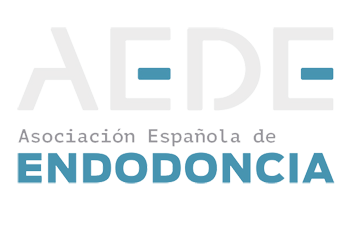Volumen 32 - Número 4
Estudio comparativo de tres técnicas de obturación endodóntica en dientes con reabsorción interna simulada evaluados con Cone Beam
Por: Ludovic Doussoulin, Paula Rossel, Veronica Larredonda
Resumen del artículo:
RESUMEN
Objetivo: Comparar la calidad de obturación (adaptación y homogeneidad) en dientes con reabsorción interna simulada utilizando la técnica decompactación lateral en frío (CL), compactación termomecánica (CT) e inyección de gutapercha termoplastificada (IT).Meterial y método: Se realizó la preparación químico-mecánica de los canales radiculares, se simuló una reabsorción interna en el tercio medio delcanal, se dividieron al azar en tres grupos de 15 dientes y se obturaron con las técnicas nombradas. Se observó la calidad de la obturación medianteel equipo Cone Beam Planmeca ProMax 3D. Se realizaron cuatro cortes de 0,02 mm en cada sentido del espacio (vestibulopalatino, mesiodistal y axial).La adaptación se analizó con test Anova y Tukey y homogeneidad con Kruskar-Wallis y Conover-Iman.Resultados: En adaptación se encontraron diferencias estadísticamente significativas (p < 0,05) entre las tres técnicas, se obtuvieron menos fallaspara IT, seguida por CT y luego por CL. En homogeneidad se encontraron diferencias estadísticamente significativas (p < 0,05) entre la técnica de CLy las otras dos técnicas en los tres sentidos, presentando IT y CT menos fallas que CL.Conclusión: IT logró mejores resultados de adaptación y homogeneidad en la zona de la reabsorción interna en comparación a las otras dos técnicas.
PALABRAS CLAVE
Obturación endodóntica; Cone Beam; Reabsorción.
ABSTRACTObjective: To compare obturation quality (both in adaptation and homogeneity) in teeth with simulated internal reabsorption (middle third of the canal) by meansof Cold Lateral Condensation (CLC), Thermomechanical Condensation (TC), and Thermoplastified Gutta- percha injection (GP) techniques.Methods: 45 teeth were prepared and internal reabsorption was simulated in the middle third of the canal. Three groups of 15 teeth each were randomly generatedand obturated according to the stated techniques. The obturation quality was evaluated with Cone Beam Planmeca ProMax 3D equipment. Four sections of 0,02mm in 3 space dimensions were generated (Vestibule palatine, Mesiodistal and Axial). Adaptation was analyzed with the Anova and Tukey test and homogeneitywith Kruskar-Wallis and Conover-Iman tests.Results: Adaptation analyses revealed statistically significant differences (p < 0,05) when comparing the three techniques. Fewer flaws were found in the correspondingorder: GP, TC and CLC. In terms of homogeneity, we found statistically significant differences (p <0,05) between CLC and the other two techniques in the threedimensions analyzed.Conclusion: GP achieved better results regarding adaptation and homogeneity in the internal reabsorption area in comparison to the other techniques underanalysis.
KEY WORDSRoot canal obturation; Cone Beam; Reabsorption.






